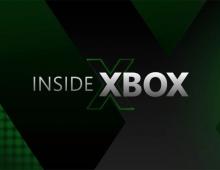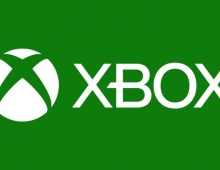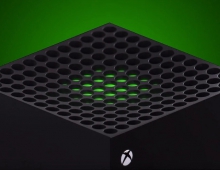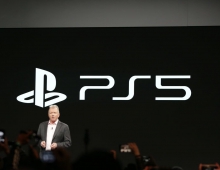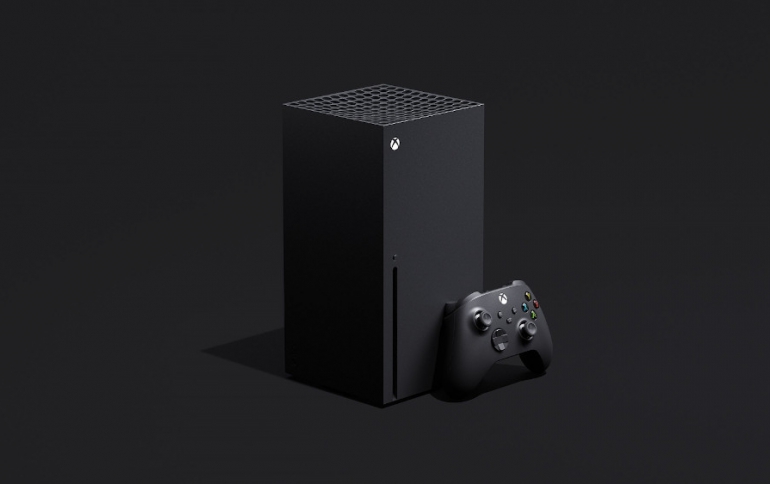
Microsoft Details the Xbox Series X Technology
The Xbox Series X, Microsoft's fastest, most powerful console ever, is coming this holiday season, and Microsoft has decided to share many bew details about the new gaming device.
In past XBox generations, power has been defined primarily by graphics innovation: from the transition from 8 bit to 16 bit graphics, 2D to 3D, SD to HD and finally to 4K.
Today, gamers are demanding more and more games run at 60 frames per second (fps) with high visual fidelity and precise, responsive input. Developers have come up with creative solutions, such as dynamic resolution scaling, to maintain high image quality while not compromising on frame rate, but this is often done to work around the limitations and constraints of current generation hardware. That’s all about to change with Xbox Series X. "It’s not just about making games look better, though. It’s about making games play better too," Microsoft says.
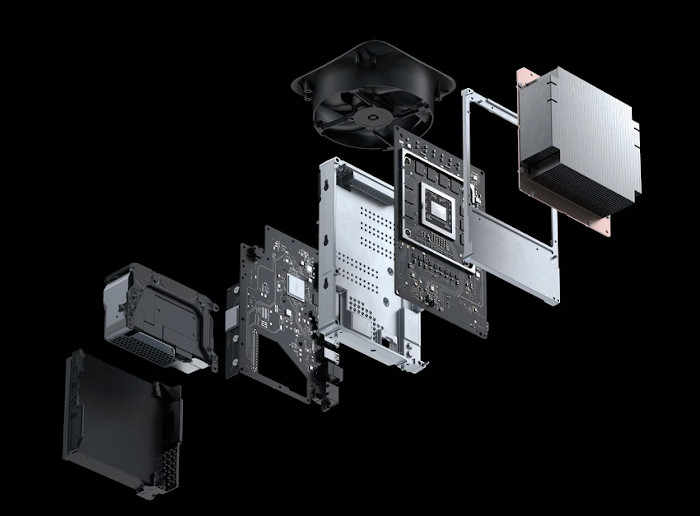
“While the Xbox Series X will deliver a massive increase in GPU performance and continue to redefine and advance the state of art in graphics with new capabilities such as hardware accelerated raytracing,” said Jason Ronald, Director of Product Management on Xbox Series X, “we don’t believe this generation will be defined by graphics or resolution alone.”
The next generation console can run games in 4K at 60 fps with no compromises for developers. The console's developers also challenged themselves to deliver a level of performance once thought impossible on console, including support for up to 120 fps for the most demanding and competitive games. While they believe resolution and frame rate are creative decisions best left in the hands of title developers, the team wanted to ensure the system was able to support the needs of the largest blockbusters, competitive esports, and independent creators.
In order to support those needs, the team strengthened their partnership with AMD, which began working with the Xbox team over 15 years ago on the Xbox 360. Sebastien Nussbaum, Corporate Vice President & Senior Fellow, Semi-Custom Products and Technologies at AMD, spoke a bit about what the team created to help power Xbox Series X.
Thanks to a focus on transformational design and generational performance uplift, Nussbaum said that, for developers, “the console ends up being a playground for technical innovation.” This is due in large part to the raw power of the custom designed processor, powered by an 8 core AMD Zen 2 CPU and an RDNA 2-class GPU.
“Xbox Series X is the biggest generational leap of SOC [System on a Chip] and API design that we’ve done with Microsoft, and it’s really an honor for AMD to be a trusted Microsoft partner for this endeavor,” said Nussbaum. “The Xbox Series X is going to be a beacon of technical innovation leadership for this console generation and will propagate the innovation throughout the DirectX ecosystem this year and into next year.”
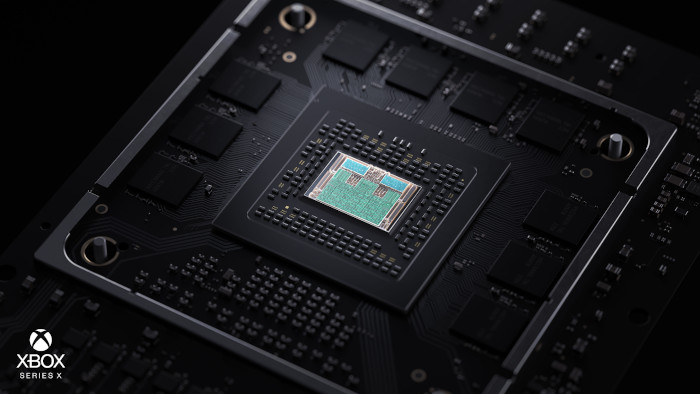
AMD and Microsoft worked together for several years to design and optimize every aspect of the Xbox Series X System on a Chip (SoC). Key features include:
- CPU computing performance powered by 8 “Zen 2” CPU Cores (16 Threads)
- A customized GPU based on next generation AMD RDNA 2 gaming architecture with 52 compute units to deliver 12 TFLOPS of single precision performance, enabling increases in graphics performance and hardware accelerated DirectX Raytracing and Variable Rate Shading
- New gaming experiences with seamless content paging from the SSD to the GPU based on the Xbox Velocity Architecture
- A 320-bit wide GDDR6 memory interface
- The custom RDNA 2 GPU and “Zen 2” CPU Cores, SoC accelerators and re-architected software stacks will enable gamers to see better image quality, higher resolutions, more stable frame rates and much shorter boot and load times.
- The Xbox Series X SoC was architected for the next generation of DirectX API extensions with hardware acceleration for Raytracing, and Variable Rate Shading.
- Xbox Series X will support the latest HDMI 2.1 specification, with support for 4K up to 120 Hz, as well as Variable Refresh Rate and Auto Low Latency Mode.
Technical Fellow Andrew Goossen took the reins to dive deep into the technological bells and whistles that will be powering Xbox Series X. The full system specs are listed below:
| CPU | 8x Cores @ 3.8 GHz (3.6 GHz w/ SMT) Custom Zen 2 CPU |
| GPU | 12 TFLOPS, 52 CUs @ 1.825 GHz Custom RDNA 2 GPU |
| Die Size | 360.45 mm2 |
| Process | 7nm Enhanced |
| Memory | 16 GB GDDR6 w/ 320b bus |
| Memory Bandwidth | 10GB @ 560 GB/s, 6GB @ 336 GB/s |
| Internal Storage | 1 TB Custom NVME SSD |
| I/O Throughput | 2.4 GB/s (Raw), 4.8 GB/s (Compressed, with custom hardware decompression block) |
| Expandable Storage | 1 TB Expansion Card (matches internal storage exactly) |
| External Storage | USB 3.2 External HDD Support |
| Optical Drive | 4K UHD Blu-Ray Drive |
| Performance Target | 4K @ 60 FPS, Up to 120 FPS |
One of the biggest (and most noticeable to players) features in Xbox Series X will be support for hardware accelerated DirectX Raytracing, which simulates the properties of light and sound in real time more accurately than any technology before it. Clayton Vaught, Technical Director for Minecraft, provided a technical demo of how raytracing could impact one of the world’s most popular games.

Switching back and forth between current visuals to hardware accelerated DirectX Raytraced visuals, Vaught walked around a pre-built Minecraft world to show off the ways realistic lighting completely changes the game. Shadows cast from objects soften or harden depending on how far away from the object you are, while lava gives off a warm orange glow that dissipates over distance and reflects off of minecart rails. Even the moon casts its own rays, streaming down through cracks in the walls and reflecting off particles in the air. The Raytraced visuals fundamentally change the way Minecraft feels, drawing the player in and immersing them in a much more realistic world.
The most impressive feature was the way light now passes through transparent objects like glass, picking up the color on its way to your eyes. This was demonstrated while walking through a hallway lined with a veritable rainbow of colored glass cubes, each of which cast a different colored shadow on the floor. The big wow moment came from the most unassuming of substances: water. With raytracing on, water was now fully transparent and allowed light from the moon to pass through it to the player underneath and realistically reflect off the seaweed swaying in the current..
To close out the segment on the power of Xbox Series X, The Coalition’s Technical Director, Mike Rayner, came up to show us how his team is planning to optimize Gears 5 for Xbox Series X. The team showcased a technical demo of Gears 5, powered by Unreal Engine, for Xbox Series X using the full PC Ultra Spec settings, which included higher resolution textures and higher resolution volumetric fog, as well as a 50% higher particle count than the PC Ultra Specs allowed. They also showed off the opening cutscene, which now runs at 60 FPS in 4K (it was 30 FPS on Xbox One X), meaning the transition from real-time cutscenes to gameplay is incredibly smooth.

There were also some noticeable improvements in a few other areas as well. Load times were extremely fast, and Microsoft's team was able to turn on some features that, while previously implemented, had to be turned off for the Xbox One X version. This included contact shadows (providing extra depth to objects) and self-shadow lighting on plants and grass, making every scene feel more realistic. Rayner also shared that the game is already running over 100 FPS and that the team is investigating implementing 120 FPS gameplay for multiplayer modes, giving players an experience never before seen on consoles.
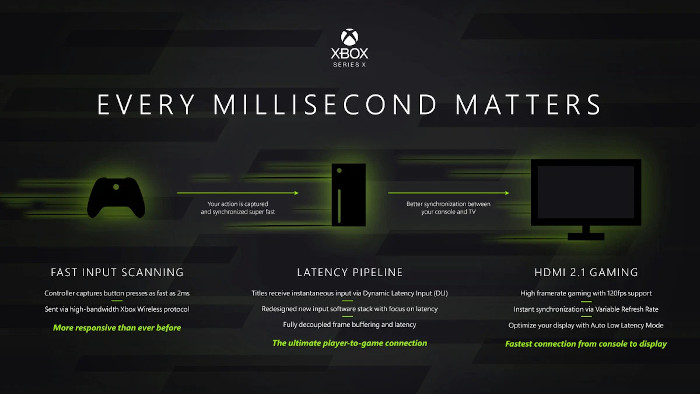
The team also announced that they will have an Xbox Series X Optimized version of Gears 5 available at Xbox Series X launch, which players will get free if they own the Xbox One version of Gears 5 and will leverage Smart Delivery depending on which console you’re using.
The next major tenet of the Xbox Series X is speed, which can be defined in a large number of different ways. Most of us want to be able to instantly jump into an experience or return right to where we left off. This influenced the team designing the system architecture, as they wanted to ensure they enabled gamers to spend more time playing and less time waiting.
A big part of that revolves around the addition of a solid-state drive (SSD).
Enter Xbox Velocity Architecture, which features tight integration between hardware and software and is a new architecture optimized for streaming of in game assets. Microsoft says that tThis will unlock new capabilities that have never been seen before in console development, allowing 100 GB of game assets to be instantly accessible by the developer.
“The CPU is the brain of our new console and the GPU is the heart, but the Xbox Velocity Architecture is the soul,” said Andrew Goossen, Technical Fellow on Xbox Series X at Microsoft. “The Xbox Velocity Architecture is about so much more than fast last times. It’s one of the most innovative parts of our new console. It’s about revolutionizing how games can create vastly bigger, more compelling worlds.”
A big beneficiary of this technological upgrade are large open world games where players have freedom to play and explore in their own way and at their own pace. Titles such as Final Fantasy XV, Assassin’s Creed Odyssey, and Red Dead Redemption 2 have redefined expectations of a living, dynamic world this generation.
To make these universes even more dynamic and feel like large, high fidelity worlds requires a massive increase in processing power and the ability to stream assets in extremely quickly to not break immersion. Developers will also be able to effectively eliminate loading times between levels or create fast travel systems that are just that: fast.
You also can’t talk about speed without also talking about latency.
“Competitive gamers and the best gaming experiences demand precise, responsive controls,” said Goossen. “The Xbox team analyzed the entire end to end input pipeline, from the controller to the console and from the console to the display and we challenged ourselves to identify every opportunity to further reduce latency to provide the best experience for gamers on Xbox.”
This has included developing brand new technology such as Dynamic Latency Input (DLI) as well as helping to shape the HDMI 2.1 specification by adding new gaming-centric features such as support for 120hz, Variable Refresh Rate (VRR) and Auto Low Latency Mode (ALLM). The team has also been working with TV manufacturers for the past two years to ensure the display ecosystem is ready for the features coming with Xbox Series X.
Finally, there are the player experiences that will be improved thanks to the speed afforded by Xbox Series X. The most noticeable of these is loading times, which will be greatly decreased thanks to the processing power of Xbox Series X.
There’s also the new Quick Resume technology. With current gen consoles, you can resume the last game you played. However, since most players play (on average) three to four games a month, the team wanted to give them the option to switch between them easily and quickly. With Quick Resume, you can resume multiple games with the press of a button, instantly jumping back into the action, right where you left off, for multiple titles at the same time.
Since game states will be stored directly in the system’s SSD, they’ll even persist after you turn off the console, unplug it entirely, or even take a system update.
The third and final pillar for Xbox Series X is compatibility.
Microsoft's team knew from the outset that they wanted to double down on compatibility. That vision helped influence the design of the system and, through a combination of hardware and software, they committed themselves to ensuring the thousands of games on Xbox One, including Xbox 360 and original Xbox games, will play even better on Xbox Series X.
Players will see the benefits of the improved hardware of Xbox Series X for backwards compatible games, including improved boot and load times, more stable frame rates, higher resolutions and improved image quality.

The Xbox team is so committed to the concept of compatibility and cross generation play, that not only do your games move forward with you, but so do your Xbox One accessories, your game saves, and progression.
What’s more, the team has also designed the system to enable cross generation multiplayer, as well as introduce new features such as Smart Delivery, which ensures you only have to purchase a title once, knowing you will get the best version of the title on whatever Xbox console you choose to play on. This will allow players to move between multiple consoles and console generations as they see fit.
Gaming Controller
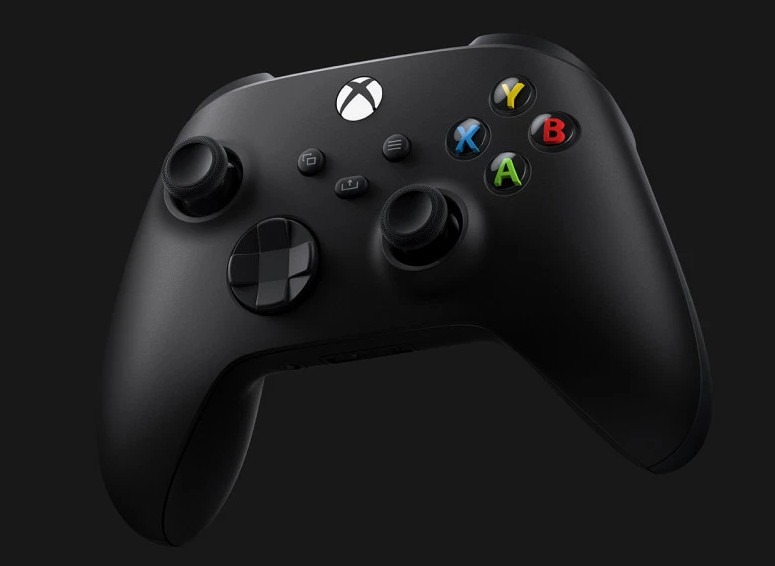
The Xbox design team developed a next-generation controller to deliver improved ergonomics for a wider range of people, better cross-device connectivity, easier sharing, and reduced latency.
One key area Microsoft is improving is fitting a wider range of hand sizes, especially smaller hands. By accommodating hands similar to those of an average 8-year-old, Microsoft found it could improve accessibility and comfort for hundreds of millions more people without negatively affecting the experience for those with larger hands. The company did that by rounding the bumpers, slightly reducing and rounding parts around the triggers, and carefully sculpting the grips.
The new D-pad is about boosting performance and accessibility for all the ways people play. When looking at the wide range of game genres and personal playstyles today, the D-pad is used in a lot of different ways. That’s why Microsoft's Elite controllers have swappable D-pads. Building on what Microsoft learned from Elite and watching how people use the D-pad, the company designed a hybrid to deliver the best of both. The slightly deeper dish gives your thumb a nice little “home” to sit in. The angles are tuned to give you a good amount of leverage with minimal movement.
Gamers want to play games on all of their devices. That includes the ability to play classic games and the latest AAA titles on a phone through xCloud. The new controller needs to work equally well on Xbox One and pairing and moving between all these devices needs to be easy.
This level of compatibility and connectivity has become the norm for devices and accessories. Increasingly, the controller will be the common touch point to your Xbox games across devices.
Some improvements are completely invisible and work in the background. Others help define the shape of the controller.
First, Microsoft is supporting cross-compatibility between Xbox Series X and Xbox One consoles and controllers. They all work together with the same great Xbox Wireless Radio. Gamers can also play on more devices including PC, Android, and iOS. Microsoft is implementing Bluetooth Low Energy (BTLE) so that pairing to these devices is much easier. The new controller also remembers multiple devices so switching between them is more seamless. And a USB-C port allows gamers to play and charge with a modern cable that’s more readily available.
Another area in which gamers are always looking for connectivity improvements is reducing latency. Microsoft is introducing a system-wide set of improvements it calls Dynamic Latency Input (DLI), which includes specific technology in the console and the HDMI connection to your TV. And it all starts with the controller. Essentially, information is sent more frequently from the controller and matched with exact frames of your game on-screen. The result: Microsoft shaves off precious milliseconds at every step of gameplay, and actions are even more instantaneous.
All of these improvements work in the background and are fairly invisible.
Microsoft's new controller is also featuring a Share button, allowing users to easily access and share content with their favorite social platforms or directly with friends.
Microsoft also added a tactile dot pattern on the triggers and bumpers, which provides grip to improve feel and performance during gameplay. The D-pad, bumpers, and triggers now have a matte finish to maintain a smooth consistent feel, whether your hands are wet or dry.


